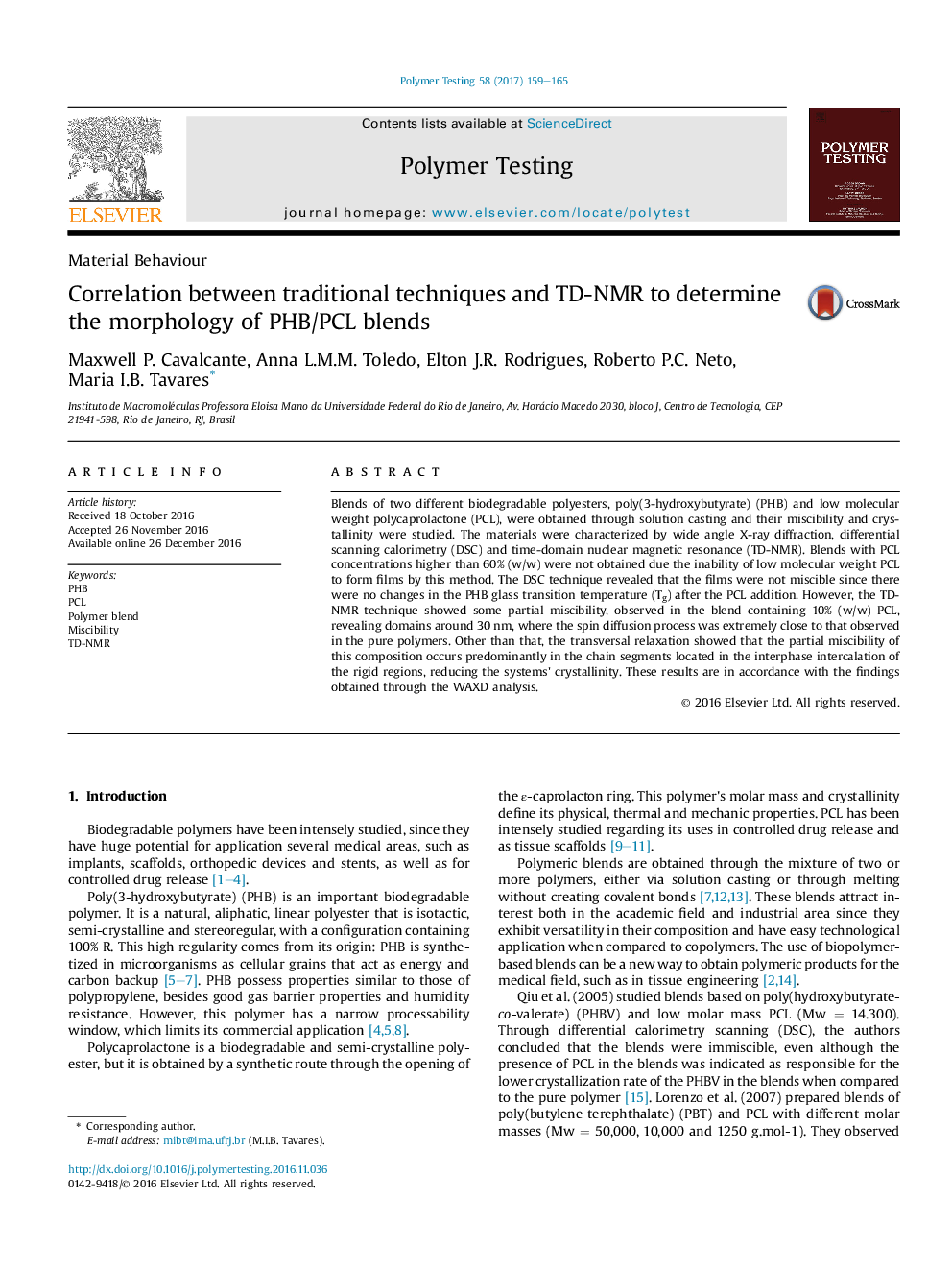| Article ID | Journal | Published Year | Pages | File Type |
|---|---|---|---|---|
| 5205680 | Polymer Testing | 2017 | 7 Pages |
Blends of two different biodegradable polyesters, poly(3-hydroxybutyrate) (PHB) and low molecular weight polycaprolactone (PCL), were obtained through solution casting and their miscibility and crystallinity were studied. The materials were characterized by wide angle X-ray diffraction, differential scanning calorimetry (DSC) and time-domain nuclear magnetic resonance (TD-NMR). Blends with PCL concentrations higher than 60% (w/w) were not obtained due the inability of low molecular weight PCL to form films by this method. The DSC technique revealed that the films were not miscible since there were no changes in the PHB glass transition temperature (Tg) after the PCL addition. However, the TD-NMR technique showed some partial miscibility, observed in the blend containing 10% (w/w) PCL, revealing domains around 30Â nm, where the spin diffusion process was extremely close to that observed in the pure polymers. Other than that, the transversal relaxation showed that the partial miscibility of this composition occurs predominantly in the chain segments located in the interphase intercalation of the rigid regions, reducing the systems' crystallinity. These results are in accordance with the findings obtained through the WAXD analysis.
